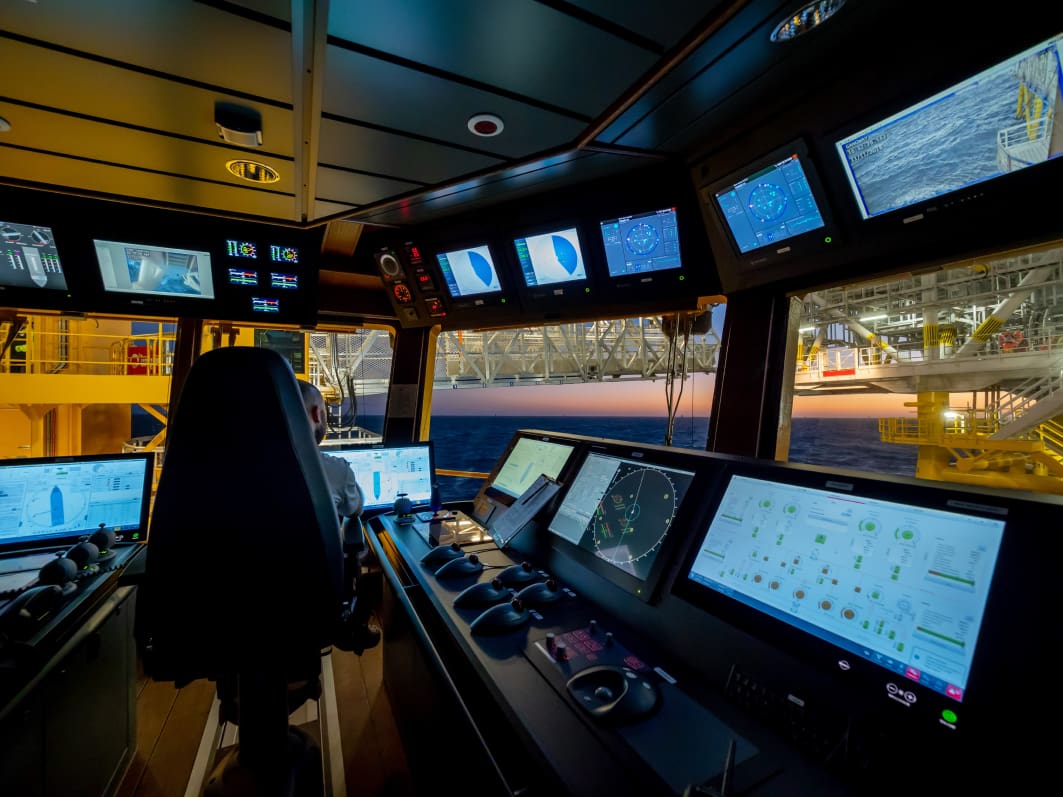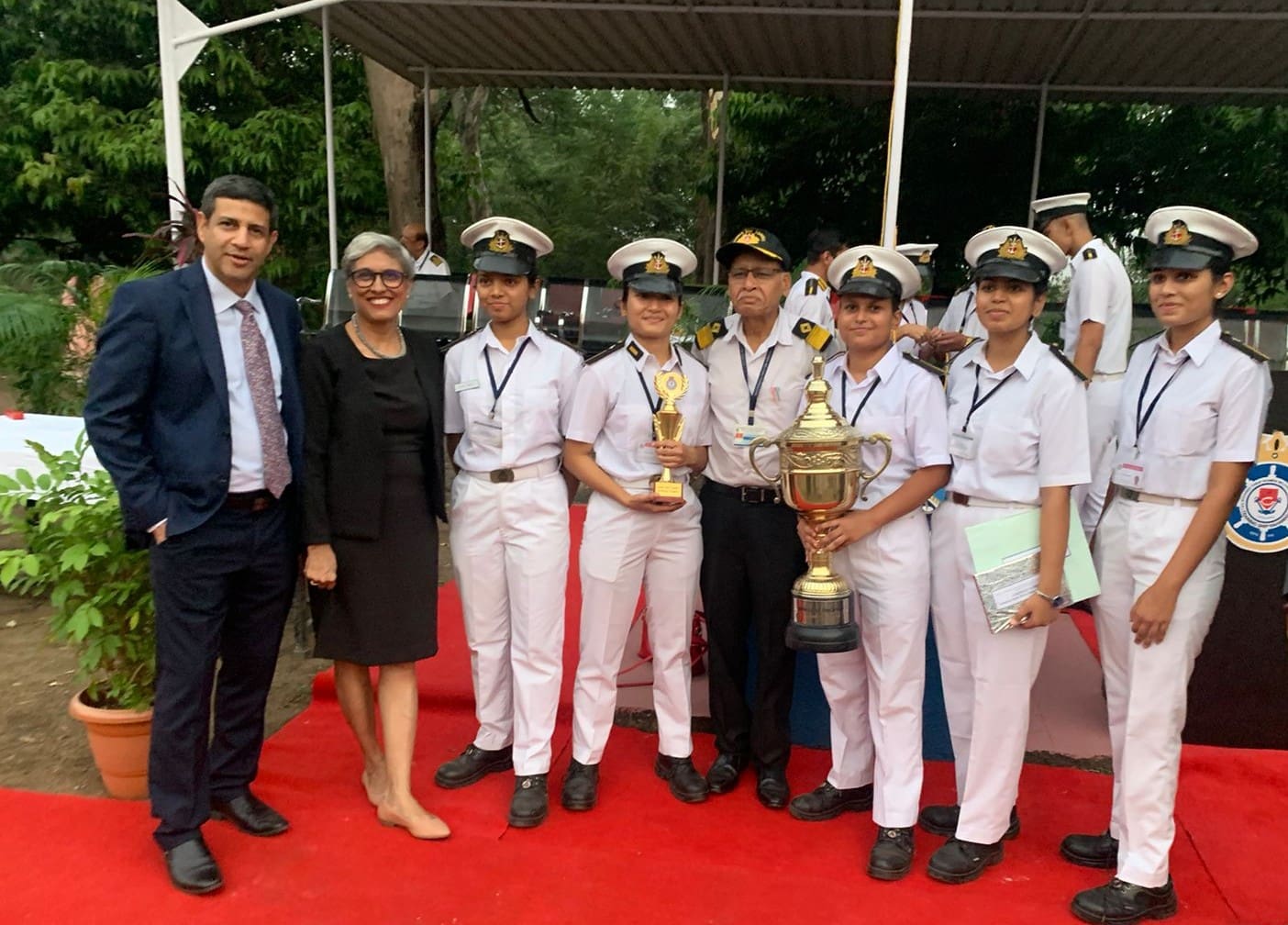Simulators – the answer to everything?

At the same time, trainees made 76% fewer errors and required 84% percent less coaching. In the maritime sector, a study by carried out by the Dutch TNO institute in 1994 concluded that 30 days of sea-time could be replaced by 40 hours of simulator time. Later research in the USA supported an even greater ratio.
Even civil aviation, which is statistically by far the safest means of transportation mean, attributes much of its famously high safety performance to the use of the flight simulator in training and recertification. While simulator-based training has proven a high return in terms of trainee performance for hours elapsed, can we call it ‘a panacea for all training needs’ or would it be more accurate to say it is a great tool – when used by the right hands?
Fleet expansion and rapid scale Simulator technology has been intensively employed for training purposes, both for cadets and for experienced officers looking to gain new skills with new uses emerging as technology develops – for example, in multi-vessel, towage and ice training scenarios.
During periods of rapid fleet expansions, in particular, it enables tutors to pass on specific skills faster and at scale – essential when there is simply not enough time or enough training berths for seafarers to acquire the necessary skills through on-the-job training. Today, on top of that fleet expansion, the maritime industry is having to embrace increased automation and the introduction of new technologies. Operating cutting-edge technology and dealing with complex situations demands higher training standards across the board. According to OCIMF, in their writing around the introduction of SIRE 2.0, well-trained crewmembers will be one of the core success criteria for ensuring safe operations and achieving commercial success.
Training will be the leverage to achieve the ultimate objectives of the industry: ‘safety and profitability’. It seems that it is taken for granted that simulator-based training will put trainees in a position to address these objectives. But is this in fact the case?
Critical skill acquisition in maritime requires hands-on training. Carrying out this sort of training on a working ship presents inherent issues with safety and loss of productivity. Simulation-based training offers a solution to both these problems.
Simulations provide a risk-free learning environment. The importance of this cannot be overstated where human life and the environment are a real concern. Where concerns about damaging the equipment are non-existent, trainees can concentrate on the training without fear of accident, thus learning much faster. Users can make as many mistakes as necessary to acquire the required skill or knowledge.
Full mission simulators provide a learning environment for role- playing in which trainees can get acquainted with each other and improve their team working skills, quite aside from developing their technical ability. This improves higher absorption and longer retention of knowledge.
Another advantage to using simulation-based training is that the young generation is much more accustomed to the technology, making it the best fit learning environment, rather than conventional classroom trainings.
Simulations usually stimulate all the human senses. Trainees have their way of learning such as listening, watching, or performing a task. The simulator replicates the work environment, equipment, and processes, accommodating the needs of different types of learners.
People, not equipment Simulation-based training is effective because it addresses the four basic principles of andragogy:
Involvement: Contrary to classroom learning, simulation training is administered in smaller groups with designated roles which requires involvement of participants.
Problem-centred: Adults learn much faster while they try to solve a problem rather than memorising. In simulation-based training, trainees are directly exposed to problematic scenarios.
Relevance: Simulation-based learning experience can be immediately applied to day-to-day onboard operations.
Builds off trainees’ experiences: Experiences are humans’ greatest learning resource for any learning objective, enabling them to form faster reasoning and analysing abilities to be applied to a similar situation when it occurs at a greater date.
We should be clear that simulation is not training in and of itself.
It is a training activity to deliver the desired knowledge and skill or improve the behaviour of the trainee. It is the trainer that adds the real value. The equipment is just a means to an end. From the design of the software to the final delivery of the training, the real value is created by the involvement of experienced professionals – that is, by people.
Simulation equipment aims to mimic the real system so that learners can experience it in all available domains. Simulation-based training provides exercises that manufacture an environment in order to provide trainees with hands-on experiences of job-related tasks. The ultimate and most important element to achieve this objective is a trainer.
Without the trainer, the best simulator in the world would be just a fancy game which imitates the visual and auditory elements of the working environment with no true learning benefit.
“Without the trainer, the best simulator in the world would be just a fancy game”
Maximising effectiveness
Simulation-based training is of maximum learning value when it is designed to exercise both soft and hard skills (‘blended training’). One of the best-known examples of is Bridge Team simulation. On the individual level it requires memory access, acquisition and processing of information, situational awareness, and the creation of an action plan. At the group level, it exercises communication, leadership, cooperation, decision making and technical aptitudes including the use of bridge and GMDSS equipment.
Most onboard systems can be considered as complex socio- technical systems that require multiple interactions between human- machine, machine-machine and human-human. To safely function in this setting, operators require blended training to work in what is, effectively, a blended environment. This form of training also creates an emotional memory of the learning experience which boosts comprehension and retention.
Effectiveness will be improved if training in the simulator is continued with a debriefing session. Exchanging experiences within the group, analysing the scenario, constructive feedback on action taken and praise where due will add significant value. Soft skill learning especially takes place in a non-linear, experiential fashion and most of the time there is no one right way to succeed. Individuals will learn mostly by living in real life but mentoring serves as valuable guidance.
Delivery methods
When we talk about simulation-based training in maritime there are commonly two types of delivery.
Full Mission Simulators:
These are physical simulators capable of simulating a total shipboard situation for a given operation (eg, bridge, engine, cargo) that emulate the whole work milieu. Full mission simulators are big in size and mostly situated in training centers. They are the best fit to combine hard and soft skill trainings.
Computer-Based Simulators:
These come in two forms; cloud simulators and Virtual Reality (VR) simulators.
Cloud simulators, in which simulation-based training can be provided to the users’ own PC, laptop, or even phone, has gained in popularity in recent years, and the pandemic accelerated the adoption. The great advantage of cloud simulators is that they can deliver training almost everywhere, even onboard. The training offered via cloud is generally a single task simulator in a limited domain.
It is best suited to hard skill training. While remote instructor-led sessions are possible, trainees can also perform pre-set scenarios multiple times without an instructor present. They can go and train on the simulator when they like, fitting it around their own schedules. This ‘self-service’ model decreases administrative burden on the training departments.
It offers the advantage of volume training and cost savings. Cloud- based simulators drastically increase the scale of delivery and have the potential to reshape the way training is structured.
VR simulation is also computer-based training but instead of a monitor, a headset is used to create an immersive environment. Again, trainees can benefit from volume training by performing pre-set scenarios multiple times.
Although VR technology provides a very convincing replica of shipboard situations, headsets are not as widely available as PC monitors and are pricey for retail customers. Also, VR headsets limit the scale of training and can be hard to get used to (especially for senior trainees). Nevertheless, it is a very promising and powerful technology.
Drawbacks
There are drawbacks and limitations to simulation-based training:
Simulation-based training is most useful in assisting a trainee who already has some knowledge in improving their knowledge and skills. However, the upper levels of the learning taxonomy such as analysis and evaluation still require reading, reflection, experience and mentoring. These things cannot be replaced by a simulator.
Simulation-based training does not guarantee information retention. Real-life implementation should follow training as soon as possible to transfer information from short-term to long-term memory.
It is possible to invest huge amounts of capital into developing simulation technology that will train technical skills – and still find that it does not fully recreate the situation or equipment required. To avoid this, training needs should be analysed from the beginning. The solution might be cheaper than you think. Maybe a simple dummy or discarded equipment can provide a better – and more cost-effective – answer than the cutting edge, expensive simulator.
Simulators can cause discomfort or sickness. This particularly an issue when using VR headsets. Simulator discomfort and sickness can undermine the effectiveness of the training.
Poorly designed training can cause cognitive overload and inhibit retention.
Simulations are not a cure for all training needs. Regardless of design success, training simulations cannot cover all elements of the imitated situation. No simulation can completely prepare you for the human error (misreporting, miscalculations, etc), delays, sick crew, or other complications which are encountered in a real situation. To minimise these effects, it is suggested to blend simulation-based training with other methods, such as role-playing and mentoring.
The key to successful training is the elaboration of the scenarios by a qualified trainer, not the fidelity of the simulation.
Training needs of the future
It is predicted that there will be a shortage of 89,510 officers by 2026. While the industry should be able to cope with this issue, it does mean that the training needs of present and future officers must be addressed as a matter of urgency. The maritime industry is evolving through digitalisation and advanced automation technologies which can be only operated by a highly skilled workforce.
Investment in learning, especially simulators and trainers, will be a great investment to prepare for the shortage of a quality workforce and to deal with future training needs. Otherwise, seafarers will mostly continue to learn on the job under the supervision of their seniors which is not as safe as simulation-based training and can lead to costs due to breakdowns and off-hires.
Simulators are not a panacea for all training needs, but they are one of the best tools we have to deliver training when designed and delivered by experienced professionals.
Despite the march of automation in the maritime industry, stability and performance results depend on the humans who operate the technology and, when necessary, intervene. The quality of the decisions and actions that we make will ensure the sustainability of our industry.

